UFC 210: Daniel Cormier vs. Anthony 'Rumble' Johnson 2Apr 11, 2017 by FloCombat Staff
UFC 210: Dissecting The Strategy Of Anthony Johnson Against Daniel Cormier
UFC 210: Dissecting The Strategy Of Anthony Johnson Against Daniel Cormier
Anthony Johnson employed a surprising strategy against Daniel Cormier at UFC 210. Was it crazy or genius? We break it down.

By Elias Cepeda
If you found yourself shocked that Anthony Johnson chose to fight Daniel Cormier with a wrestling-centric approach last week at UFC 210, you’re not the only one.
The light heavyweight challenger’s own corner of coaches were themselves mystified and even disgusted by Johnson’s insistence on closing the distance with the Olympic wrestler, indicating that “Rumble” was fighting contrary to their plans and preparation.
“Why is he wrestling him?” one coach could be heard saying during the first round. Coach Henri Hooft agreed, saying, “This is stupid.”
[tweet url="https://twitter.com/UFCInsiders/status/851129153583710208" hide_media="0" hide_thread="1"]
While Johnson’s coaches spoke to him in the corner between rounds one and two, they tried to emphasize to him directly that they didn’t want him initiating wrestling exchanges. They also instructed him to focus more on throwing punches instead of kicks in order to make it more difficult for Cormier to catch a strike and start his own takedown attempts.
“Now, you’re not going to wrestle,” Hooft told Johnson. “No kicks. Where are your hands?” he continued, with another coach emphasizing, “Don’t [expletive] wrestle him.”
The wrestling continued in round two. And yet, it didn’t play out as simply as many observers seem to think it did.
Johnson’s approach didn’t get him the win, but he wasn’t crazy for fighting the way he did. It’s occurred to me there could have been any number of possible reasons why Johnson took the approach he did, most of them being quite understandable, even if flawed or not perfectly executed.
First, however, let’s not forget how effective Johnson was with his stand-up striking in the first round. Johnson looked to strike first off separation, especially picking up on Cormier’s tendency to lean and bob low to his right, and connected with big shots, including a kick that appeared to break Cormier’s nose.
Here’s where the first theory, offered by Cormier himself, could come into play.
“I couldn’t believe that he was actually forcing the wrestling,” Cormier said, post-fight. “’Rumble’ has that big burst and then he starts to panic. At the end of the day, he’s a wrestler so he went back to what he knows. He took me down twice, so obviously it was working. But you’ve got to keep me down once you get me down…I knew that as we went on, I would eventually get to him.”
According to Cormier’s thinking, Johnson connected with several huge punches, kicks and knees to Cormier’s body and head, even bending the champ’s nose the wrong way. After doing all that, Cormier didn’t even so much as flinch, wobble or stall.
Johnson has easily finished other fighters with such “bursts,” as Cormier put it, so perhaps after his first one didn’t seem to faze Cormier, Johnson instinctively went back to his roots and looked to grapple.
Of course, Johnson began wrestling even before that sequence, so perhaps he came into the fight with some plans or notions in his head separate from what his coaches wanted him to do. Perhaps, for example, Johnson wanted to prove to himself, to Cormier, and to the world that he could beat the champ in his own strongest area.
That isn’t so uncommon. Jon Jones himself said he took precisely that approach in his bout against Cormier.
If you’ll remember, the long and rangy Jones fought much more effectively on the inside against Cormier, controlling most of the wrestling there. Afterwards, Jones said he intentionally looked to fight in Cormier’s strongest ranges—just to prove a point.
Perhaps Johnson’s wrestling strategy was less ego-driven than that, however. After all, he could have easily realized that Cormier likely expected one set pattern of movements and approaches, emphasizing standing at length and striking in free-range on the feet.
Johnson could have wanted to be more unpredictable in the long, scheduled five-round contest, intending to make Cormier worry about more weapons than he previously thought he would have to. A related wrinkle to such an approach could have included Johnson trying to get Cormier to unexpectedly focus on wrestling and then for “Rumble” to tactically switch up modes and go back to trying to do damage with strikes, largely on separation after lulling DC into feeling like they were just in a grappling contest.
In fact, this is precisely what appeared to happen in the moment Johnson landed his biggest flurry, including the nose-bending kick. After getting shocked that he had to fend takedown attempts from Johnson, Cormier got hoodwinked into opening up his guard, grabbing hands, held high, in a sort of momentary WWE-style strength contest.
After an artificial break and separation forced by referee John McCarthy with about a minute left in the first round where he peeled Cormier off Johnson, against the fence, the two quickly got within reach of one another again.
At that point, with Cormier standing and moving like he was in a grappling match, not an MMA fight and so didn’t have his hands and arm in proper defensive position, Johnson disengaged and threw his punch, knee, kick sequence toward Cormier.
Whatever prompted Johnson to initially start the wrestling battles with Cormier, there could be a very simply reason as to why he persisted with them – namely, that he was very successful in wrestling Cormier up until the final moments of the fight.
The truth is that, early on, Johnson’s wrestling approach was as effective as it was shocking. Johnson slammed Cormier down multiple times before he finally lost a grappling exchange and himself got felled.
A tactic met with success can be easy to fall in love with for a fighter. In the first round, Johnson was hugely successful.
He broke Cormier’s nose with strikes and dominated the champ where he was strongest – in the wrestling range. Then, they wrestled on in the second round.
Something I think is important to realize is that, after receiving his coaches' instructions in between the first and second rounds, Johnson didn’t actually initiate the wrestling in the second period.
Hooft sagely counseled Johnson to be sparing with his kicks precisely because great wrestlers are so often good at catching them and converting them into takedowns. Johnson didn’t start the clinching in the second round, but he did lead with a kick that got him into that range.
Cormier caught a Johnson kick and pressed him against the cage, looking for a takedown. Johnson then successfully reversed positions and got off the cage.
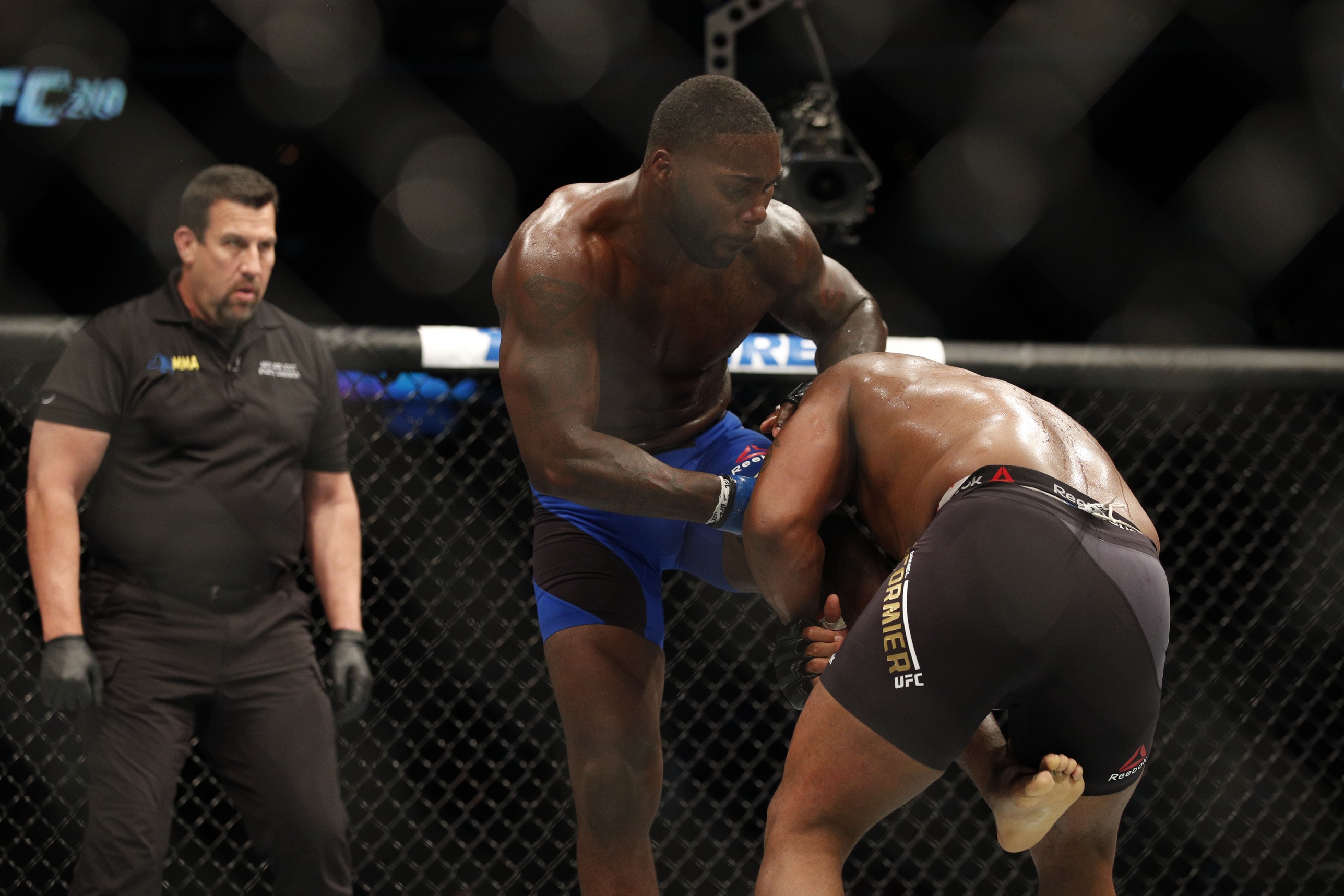
At that point, the challenger may have had an opportunity to once more tactically disengage and get back to free-range striking. He didn’t, instead deciding to continue the grappling battle and look for yet another takedown.
That ended up being a mistake, as Cormier went on to cleanly win his first clinch exchange of the fight, taking Johnson down with an inside trip off a single-leg attempt. The rest is history, with the much better mat-grappler Cormier soon submitting Johnson as he did in their first fight.
Johnson’s decision to stay in the clinch after getting off the fence was a mistake, but an understandable one—firstly because he’d been so successful in that range up to that point.
Secondly, for men and women of a certain fighting ilk, it can be difficult to not push back when pushed. That is to say: backing away isn’t necessarily an easy thing for some fighters to do, even when they should, for tactical reasons.
Perhaps, after finding so much success with his own offensive takedowns and initially defending Cormier’s own attempts, Johnson himself was lulled into believing that his wrestling advantage would hold. Had Johnson taken Cormier down, again, and managed to hold him there, he very well could have done damage on top with strikes.
It didn’t work out that way for Johnson, and instead of possibly mixing things up in the fight with wrestling, he got too predictable with his search for takedowns, and didn’t have the mat-grappling skills from bad positions to work his way out and up.
Ultimately, sticking to it didn’t work out for him, but he wasn’t an idiot for trying to continue to do what was working for him. Cormier doesn’t pack the single-strike power Johnson does on the feet (who does?) but he’s just as skilled and technical there, which means there would be no gimme for Johnson there, either.
Everything is easy to assess in retrospect. In the moment, however, things get muddled and complicated, and decisions are rarely easy, guaranteeing success even less.
Johnson tried something, and it worked until it didn’t. If his initial wrestling dominance had held out a bit longer, perhaps he would have won and everyone would have been talking about him as a genius, citing unexpected well-roundedness and novel tactics.
If you found yourself shocked that Anthony Johnson chose to fight Daniel Cormier with a wrestling-centric approach last week at UFC 210, you’re not the only one.
The light heavyweight challenger’s own corner of coaches were themselves mystified and even disgusted by Johnson’s insistence on closing the distance with the Olympic wrestler, indicating that “Rumble” was fighting contrary to their plans and preparation.
“Why is he wrestling him?” one coach could be heard saying during the first round. Coach Henri Hooft agreed, saying, “This is stupid.”
[tweet url="https://twitter.com/UFCInsiders/status/851129153583710208" hide_media="0" hide_thread="1"]
While Johnson’s coaches spoke to him in the corner between rounds one and two, they tried to emphasize to him directly that they didn’t want him initiating wrestling exchanges. They also instructed him to focus more on throwing punches instead of kicks in order to make it more difficult for Cormier to catch a strike and start his own takedown attempts.
“Now, you’re not going to wrestle,” Hooft told Johnson. “No kicks. Where are your hands?” he continued, with another coach emphasizing, “Don’t [expletive] wrestle him.”
The wrestling continued in round two. And yet, it didn’t play out as simply as many observers seem to think it did.
Johnson’s approach didn’t get him the win, but he wasn’t crazy for fighting the way he did. It’s occurred to me there could have been any number of possible reasons why Johnson took the approach he did, most of them being quite understandable, even if flawed or not perfectly executed.
First, however, let’s not forget how effective Johnson was with his stand-up striking in the first round. Johnson looked to strike first off separation, especially picking up on Cormier’s tendency to lean and bob low to his right, and connected with big shots, including a kick that appeared to break Cormier’s nose.
Here’s where the first theory, offered by Cormier himself, could come into play.
“I couldn’t believe that he was actually forcing the wrestling,” Cormier said, post-fight. “’Rumble’ has that big burst and then he starts to panic. At the end of the day, he’s a wrestler so he went back to what he knows. He took me down twice, so obviously it was working. But you’ve got to keep me down once you get me down…I knew that as we went on, I would eventually get to him.”
According to Cormier’s thinking, Johnson connected with several huge punches, kicks and knees to Cormier’s body and head, even bending the champ’s nose the wrong way. After doing all that, Cormier didn’t even so much as flinch, wobble or stall.
Johnson has easily finished other fighters with such “bursts,” as Cormier put it, so perhaps after his first one didn’t seem to faze Cormier, Johnson instinctively went back to his roots and looked to grapple.
Of course, Johnson began wrestling even before that sequence, so perhaps he came into the fight with some plans or notions in his head separate from what his coaches wanted him to do. Perhaps, for example, Johnson wanted to prove to himself, to Cormier, and to the world that he could beat the champ in his own strongest area.
That isn’t so uncommon. Jon Jones himself said he took precisely that approach in his bout against Cormier.
If you’ll remember, the long and rangy Jones fought much more effectively on the inside against Cormier, controlling most of the wrestling there. Afterwards, Jones said he intentionally looked to fight in Cormier’s strongest ranges—just to prove a point.
Perhaps Johnson’s wrestling strategy was less ego-driven than that, however. After all, he could have easily realized that Cormier likely expected one set pattern of movements and approaches, emphasizing standing at length and striking in free-range on the feet.
Johnson could have wanted to be more unpredictable in the long, scheduled five-round contest, intending to make Cormier worry about more weapons than he previously thought he would have to. A related wrinkle to such an approach could have included Johnson trying to get Cormier to unexpectedly focus on wrestling and then for “Rumble” to tactically switch up modes and go back to trying to do damage with strikes, largely on separation after lulling DC into feeling like they were just in a grappling contest.
In fact, this is precisely what appeared to happen in the moment Johnson landed his biggest flurry, including the nose-bending kick. After getting shocked that he had to fend takedown attempts from Johnson, Cormier got hoodwinked into opening up his guard, grabbing hands, held high, in a sort of momentary WWE-style strength contest.
After an artificial break and separation forced by referee John McCarthy with about a minute left in the first round where he peeled Cormier off Johnson, against the fence, the two quickly got within reach of one another again.
At that point, with Cormier standing and moving like he was in a grappling match, not an MMA fight and so didn’t have his hands and arm in proper defensive position, Johnson disengaged and threw his punch, knee, kick sequence toward Cormier.
Whatever prompted Johnson to initially start the wrestling battles with Cormier, there could be a very simply reason as to why he persisted with them – namely, that he was very successful in wrestling Cormier up until the final moments of the fight.
The truth is that, early on, Johnson’s wrestling approach was as effective as it was shocking. Johnson slammed Cormier down multiple times before he finally lost a grappling exchange and himself got felled.
A tactic met with success can be easy to fall in love with for a fighter. In the first round, Johnson was hugely successful.
He broke Cormier’s nose with strikes and dominated the champ where he was strongest – in the wrestling range. Then, they wrestled on in the second round.
Something I think is important to realize is that, after receiving his coaches' instructions in between the first and second rounds, Johnson didn’t actually initiate the wrestling in the second period.
Hooft sagely counseled Johnson to be sparing with his kicks precisely because great wrestlers are so often good at catching them and converting them into takedowns. Johnson didn’t start the clinching in the second round, but he did lead with a kick that got him into that range.
Cormier caught a Johnson kick and pressed him against the cage, looking for a takedown. Johnson then successfully reversed positions and got off the cage.

At that point, the challenger may have had an opportunity to once more tactically disengage and get back to free-range striking. He didn’t, instead deciding to continue the grappling battle and look for yet another takedown.
That ended up being a mistake, as Cormier went on to cleanly win his first clinch exchange of the fight, taking Johnson down with an inside trip off a single-leg attempt. The rest is history, with the much better mat-grappler Cormier soon submitting Johnson as he did in their first fight.
Johnson’s decision to stay in the clinch after getting off the fence was a mistake, but an understandable one—firstly because he’d been so successful in that range up to that point.
Secondly, for men and women of a certain fighting ilk, it can be difficult to not push back when pushed. That is to say: backing away isn’t necessarily an easy thing for some fighters to do, even when they should, for tactical reasons.
Perhaps, after finding so much success with his own offensive takedowns and initially defending Cormier’s own attempts, Johnson himself was lulled into believing that his wrestling advantage would hold. Had Johnson taken Cormier down, again, and managed to hold him there, he very well could have done damage on top with strikes.
It didn’t work out that way for Johnson, and instead of possibly mixing things up in the fight with wrestling, he got too predictable with his search for takedowns, and didn’t have the mat-grappling skills from bad positions to work his way out and up.
Ultimately, sticking to it didn’t work out for him, but he wasn’t an idiot for trying to continue to do what was working for him. Cormier doesn’t pack the single-strike power Johnson does on the feet (who does?) but he’s just as skilled and technical there, which means there would be no gimme for Johnson there, either.
Everything is easy to assess in retrospect. In the moment, however, things get muddled and complicated, and decisions are rarely easy, guaranteeing success even less.
Johnson tried something, and it worked until it didn’t. If his initial wrestling dominance had held out a bit longer, perhaps he would have won and everyone would have been talking about him as a genius, citing unexpected well-roundedness and novel tactics.
Related Content
 Replay: XFN 45 | Aug 27 @ 4 PM
Replay: XFN 45 | Aug 27 @ 4 PMAug 27, 2022
 Replay: NFC MMA #148 | Aug 20 @ 7 PM
Replay: NFC MMA #148 | Aug 20 @ 7 PMAug 21, 2022
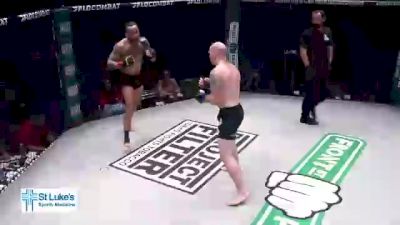 Replay: Front Street Fights 24 | Aug 6 @ 7 PM
Replay: Front Street Fights 24 | Aug 6 @ 7 PMAug 7, 2022
 Replay: XFN 44 | Jun 25 @ 4 PM
Replay: XFN 44 | Jun 25 @ 4 PMJun 26, 2022
 Replay: FIGHTNIGHT LIVE: Kings Promotions | Jan 20 @ 7 PM
Replay: FIGHTNIGHT LIVE: Kings Promotions | Jan 20 @ 7 PMJan 21, 2023
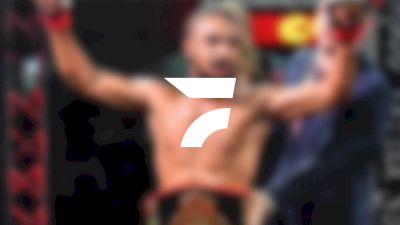 How to Watch: FIGHTNIGHT LIVE: Rising Star Promotions
How to Watch: FIGHTNIGHT LIVE: Rising Star PromotionsDec 14, 2022
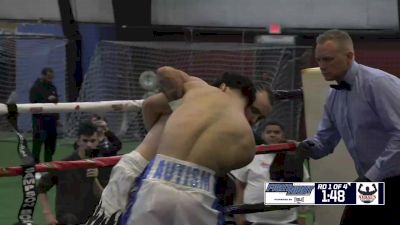 Replay: FIGHTNIGHT LIVE: Nedal's Promotions | Dec 9 @ 7 PM
Replay: FIGHTNIGHT LIVE: Nedal's Promotions | Dec 9 @ 7 PMDec 10, 2022
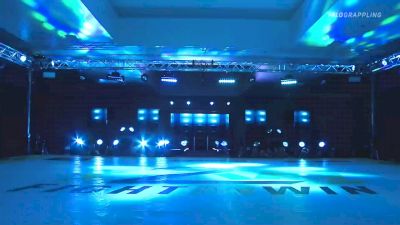 Replay: Fight to Win 215 Pro | Nov 19 @ 5 PM
Replay: Fight to Win 215 Pro | Nov 19 @ 5 PMNov 20, 2022
 Replay: Fight to Win 214 Pro | Nov 11 @ 5 PM
Replay: Fight to Win 214 Pro | Nov 11 @ 5 PMNov 12, 2022